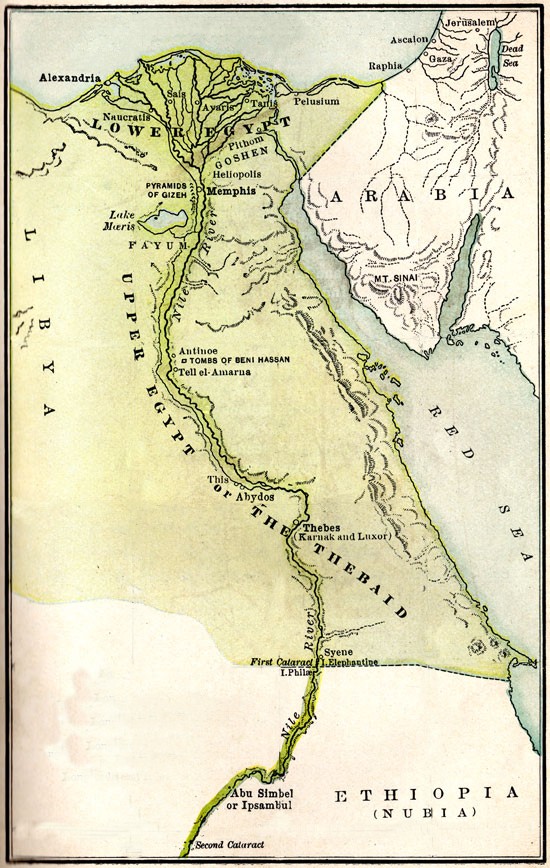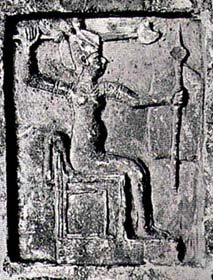![]()
AnathYHW Papyrus
The Elephantine Papyri are a number of papyri that were
found at the ancient Egyptian

One of the papyri, Cowley No. 44 (TAD B7.3, Sachau Plate 32), is an oath taken in a court of law by Menachem bar Shallum.
Oath of Menachem bar Shallum bar Hoduyah which he swore to Meshullam bar Nathan by YHW Eloha, by the place of worship, and by AnathYHW, and he said to him saying, the she-ass which is in the possession of Pamisiy (an Egyptian name) son of Pamet, about which you sue me, look, the half of it which is legally mine. But Pamisiy your father claimed to own it saying that he gave to me a he-ass in exchange for half of it. But he did not give to me either money or value in exchange for the half of it.
Cowley writes in his intro, “”This name (YHW), as I have
argued elsewhere, is not an abbreviation of YHWH, but an earlier form, and only
another way of writing the earliest form IW.” Concerning the fact that the Jews
at
In the footnote 7, of Portens copy, he states, “they would have viewed AnathYHW as that aspect of YHWH which assured man’s well being;” “Not Anath was attached to YHW, but YHW was attached to Anath in a parallel construction to Anathbethel.” - pg. 266.
According to Ugaritic texts, Anath is the later generation manifestation of the mother goddess, the daughter of El and Asherah, as well as sister to Baal. Clearly, as with so many cultures, any woman that did not submit to the invading patriarchal system, who refused to take a husband, became a threat, and was demonized, like the Greek Amazons and Athene of the Greeks. The patriarchs took the warring aspect of mother and separated it to a separated goddess, the warrior maiden. Some scholars like to present Anath as a consort to Baal, that she is a goddess of sexuality as well, but there is too much controversy and not enough textual evidence to support that belief. She is represented as a virgin and one of her titles is that of Maiden Anath. She is also the goddess of war and is a huntress, depicted with a helmet, shield, spear and battle ax. In the role of a violent warrior, one of Anath’s titles is Anath the Destroyer. Anath and Athene are paired on some inscriptions and carry the same symbolism.

Anath is a wee bit different from the other deities, in that she does not abide by social norms, and by norms, I mean the patriarchal societies that dominate most cultures. Anath does not live in the house of her father El, nor does she marry and live in the house of her husband. She speaks disrespectfully to El and threatens his life, saying that she will cause his grey hair to run with blood and his grey beard with gore if he does not grant her requests. In both cases, El simply replies, I know you my daughter, that you are like a man.” Anath does not respect any authority and seems to do as she pleases, when she pleases. The fact that Anath chooses occupations that are generally considered a man’s occupation, seems to be a great problem, especially for the patriarchal, deuteronomistic writers of portions of the Tanak. There are portions of text about her, but her name has either been removed or was intentionally deleted in an effort to remove anything female from the rising monotheism that they were advocates of. The portrayal of women, that did not conform to the subservient confines of the patriarchal religions, were depicted as aberrant women, out of control without a man to dominate them, unruly.
One inscription concerning Anat, states that she is the strongest
of the astartes. In this case, astarte is not the female deity,
but it is the generalized term for goddess, much as the word goddess is used
in English. An actual praise to Anath from the Chester Beatty Papyrus
In the older Egyptian religion, the virgin daughter of
Mitsrayim [
There was a verse in Shemoth [Exodus]
Another Ugaritic example connected with Anath is that of Pughat. Danel was a man of the Rephaiym in the Epic of Aqhat. He had no son and prayed for one and was eventually granted one, named Aqhat. Aqhat was given a bow by the gods. Anath coveted the bow and demanded it, threatening him if he refused. Aqhat refused and she sent one of her servants, Yaptan, to kill him. Pughat, the sister of Aqhat, decides to avenge his death. To kill Yaptan, “she washed and rouged herself with rouge from seashells whose habitat is a thousand fields in the sea. Beneath, she put on a warriors garment. She placed a knife in its sheath; she placed a sword in its scabbard. On top she put on a woman’s garment.” - The Godess Anat in Ugaritic Myth, pgs. 206, 207. In this manner she sought to gain audience as a prostitute, then kill him with the weapons of the warrior.
Anath and Astarte were one and the
same mother goddess at one time. Then they were separate goddesses, which came
to be merged at times, even considering Anath an astarte. There is a late Roman cultic practice of the
initiates of Astarte involving the men wearing of women’s clothing. During the
rituals, when the initiates were in a frenzy, they
would castrate themselves with stone or pottery, no metal was allowed. They
would then assume the clothing of women and serve Astarte. With this in mind,
the command for men not to wear women’s clothing might stem from the same
goddess’s worship. In later
The other two verses that were oddly placed in a chapter of
other miscellaneous warnings of pagan practices deals with the side whiskers
and beards. Wayiqqra [Leviticus]
Another warrior/male aspect associated with Anath is that of her shaving her side whiskers and her beard with flint, to mourn Baal when she found his dead body and then went to kill Moth to avenge the death of Baal. This is important, not because she may have been a wee bit hairy, like some photos I have seen of women in Eastern Europe, but because of exactly what she is cutting and why.
If Anath was known to cut the side whiskers on the side of her head and shave her beard, as her father El had done when he heard the news of Baal’s death, this may be an indication of the way a man mourned in the cult of the dead. Another thought might be the warrior aspect that this is the general appearance of soldiers in some cultures. After doing a brief search through images from archaeology on Canaanites, most of which encompass deities and warriors, you see a pattern of the side burns and sides of the beards being shaven. This occurs in some other cultures as well, so it is not strictly Canaanite. My theory is battle. Alexander the Great, when viewing a battle between his Macedonian soldiers and some Persians, noticed the propensity of the soldiers to grab their enemies hair and beards, pulling the men in closer to stab them. He decided that if there was nothing to grab, his men would have an advantage, so he ordered that his soldiers shave their faces and cut their hair short as a military tactic. So whether Anath did the shavings as a sign of morning, in a fashion that men would do, or whether it was a warrior trait, possibly as a warfare advantage, Anath, a woman, is following a male practice of shaving the sideburns and sides of the beard, or a patriarchal society is making her more male since they could not wipe her out as a female.
Another archaeological find is that of some arrowheads dated
to the 11th century
A personal name in the Hebrew Tanak/Bible is that of Shamgar ben Anath [ben = son of] – a warrior, Shoftiym [Judges] 3:31. A city also bears her name, Beyth [house of] Anaths (plural) - Anathoth.
Sources
Aramaic Papyri of the Fifth Century B. C., A. Cowley, Oxford At the Clarendon Press, 1923
Dictionary of Deities and Demons in the Bible, Van der Toorn, Becking and Van der Horst, Brill, Leiden, 1999
Did God Have a Wife? Archaeology and Folk Religion in Ancient Israel, William G. Dever, Erdmans Publishing Co., Grand Rapids, Michigan, 2005
The Elephantine Papyri In English.
Three Millennia of Cross-Cultural Continuity and Change, Bezalel
Porten, E. J. Brill,
The Goddess Anat in Ugaritic Myth, Neal H. Walls, Society of Biblical Literature, Scholars Press, Atlanta, GA, 1992
The Violent Goddess Anat in the Ras Shamra Texts, Arvid Kapelrud, Universitetsforlaget, 1969
